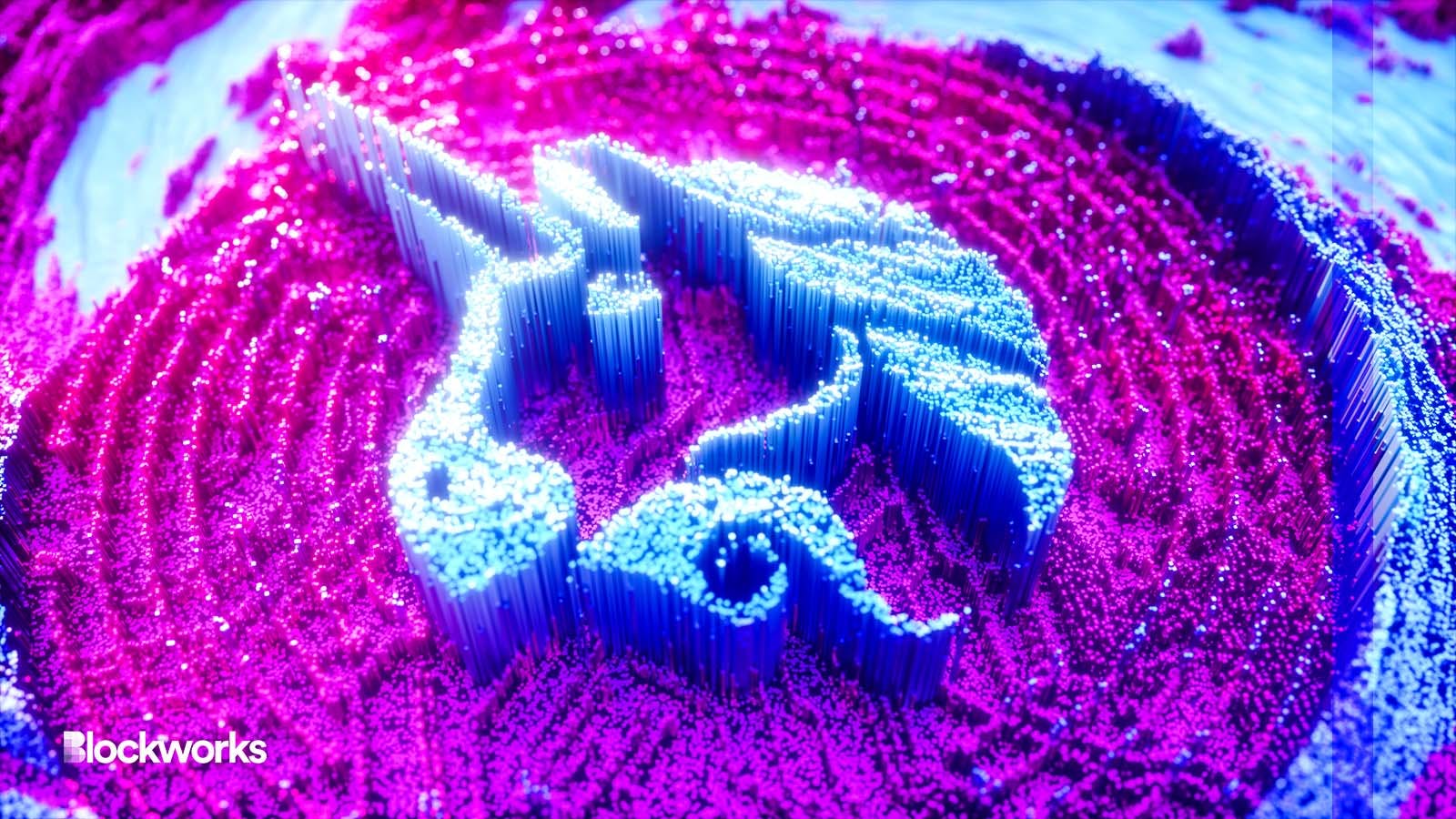Would Uniswap be better off on its own appchain?
The appchain model gives the community true “ownership of the application,” Blockworks Research analyst David Rodriguez argues

Vector-3D/Shutterstock modified by Blockworks
The latest improvements to Uniswap, the largest decentralized crypto exchange by volume, are on their way, with draft code recently released for the community to scrutinize.
The V4 update will introduce a number of improvements, including “hooks” — smart contracts that interact and build on top of custom pools — and architectural efficiencies that should significantly reduce gas costs.
So once V4 is settled, what’s coming up for Uniswap?
On a recent Empire podcast (Spotify / Apple), Blockworks research analyst David Rodriguez says the next “obvious step” would be for Uniswap to operate its own appchain.
Owning and operating “the entire stack,” as opposed to running on Ethereum, provides important advantages, Rodriguez says.
“Not only can you potentially monetize at every layer of the stack, but because you own that full stack, you’re actually able to have full customization of your application.”
On an appchain like those offered in the Cosmos ecosystem, applications and chains are “aware of each other,” Rodriguez explains. “So there’s application-specific logic that you can bake into how your chain actually comes to consensus.”
Bending the knee
Rodriguez mentions one example of the difficulties of operating on the Ethereum network with the upcoming “singleton contract” under V4. It reduces gas fees by allowing tokens to be transferred via a single contract instead of between pools held in different smart contracts.
But to enable the most efficient routing, he says, Uniswap “needs transient storage to be baked into Ethereum.”
Such a particular change to the Ethereum network could be perceived as “catering to a specific protocol,” Rodriguez says.
The research analyst says past arguments regarding this issue centered on whether Ethereum should be “bending the knee to Uniswap,” changing its roadmap to prioritize the popular DeFi primitive over other applications in the ecosystem.
If the Uniswap community simply wants to build the best product, it can build its own full stack on an appchain and operate independently of other network demands, Rodriguez says.
“You don’t have to start politicizing or lobbying for a reason why your specific op code that you want in Ethereum needs to go ahead of others.”
The appchain model gives the community true “ownership of the application,” Rodriguez argues. “Whereas right now, everything that’s built on Ethereum is really at the mercy of Ethereum.”
Capturing value
Blockworks research analyst Ren Yu Kong disagrees. “V4, to me, signifies that Uniswap may not go to an appchain model,” he says.
The major reason for a DeFi application to move to the appchain model would be for “value capture,” Kong says.
That is accomplished in two ways, Kong says. Either through the “internalization of MEV” — where value from network activities is returned to the protocol rather than external MEV actors — or turning on a fee switch.
Under V4’s improvements, Kong says, the “hook” smart contract improvement allows for some internalization of MEV — a narrative that is being “publicly pushed by Uniswap themselves,” with Uniswap-backer Paradigm Capital’s Dan Robinson promoting the approach, Kong says.
“Now you have withdrawal fees. Now you have swap fees.” Protocols that launch hooks can capture both, he says.
“If Uniswap’s allowing all of these liquidity pool launchers to do that, then maybe they aren’t that concerned about value capture,” Kong says.
“Maybe there’s not so much need for an appchain.”
Start your day with top crypto insights from David Canellis and Katherine Ross. Subscribe to the Empire newsletter.
Explore the growing intersection between crypto, macroeconomics, policy and finance with Ben Strack, Casey Wagner and Felix Jauvin. Subscribe to the Forward Guidance newsletter.
Get alpha directly in your inbox with the 0xResearch newsletter — market highlights, charts, degen trade ideas, governance updates, and more.
The Lightspeed newsletter is all things Solana, in your inbox, every day. Subscribe to daily Solana news from Jack Kubinec and Jeff Albus.





